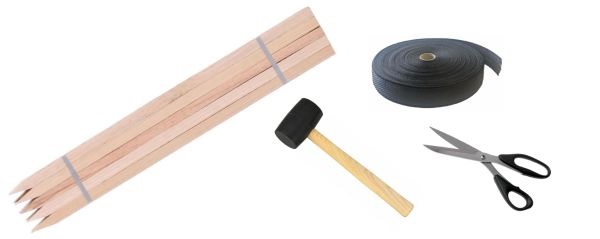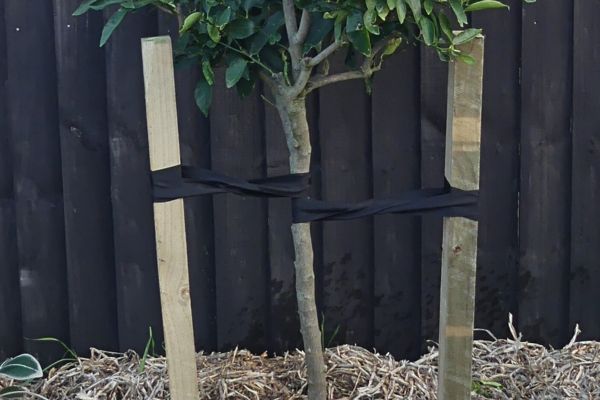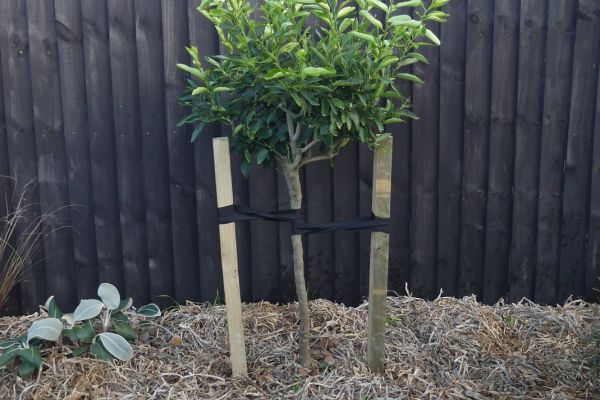In the early stages of planting a new tree, you must add a stake to provide support and stabilisation. Staking the tree will stabilise it, keep the stem straight, and help the tree set down solid and healthy roots, especially in windy or exposed sites. We want to ensure the tree stem still has movement when staking because the movement will help strengthen the trunk and stimulate root growth.
It is important to note that while staking can be beneficial, it needs to be done correctly to avoid potential problems. Over-staking or leaving the tree staked for too long can hinder natural trunk movement and may lead to a weaker, less resilient tree.

Materials Needed To Stake Your Tree
Stakes: Use sturdy wooden (2x2 inch for trees is ideal) or metal stakes that are tall enough to support the tree but not so tall that they interfere with its growth. Choose a stake that is as tall as your tree's trunk, and then add another 40cm for the reduction in height when you bang it into the ground.
Tree tie webbing or similar: Soft and flexible tree webbing is best. For smaller plants like standard roses, 1.5-2m of material is needed. For the citrus tree shown, 4m of tree tie webbing is used, so for larger trees and plants, don't underestimate how much you will need.
Hammer or mallet: If your stake is splitting as you are hitting it because of hard soil, a top tip is to put another piece of wood on top of your stake as hammering to soften the blow.
Scissors: To cut the material. A top tip if using tree tie webbing or similar material is to use a lighter to singe the ends. This stops the material from fraying.

How To Stake Your Tree Correctly
Timing: Ideally, stakes should be added at the time of planting or shortly afterwards to avoid root damage, and should be installed on a calm day.
Position: Place two stakes on either side of the tree. These should be at least 5cm away from the trunk but should ideally sit on the outside of the tree's root ball. A single stake may work for a smaller tree or shrub like a standard rose.
Drive stakes into the ground: Use a hammer or mallet. Ensure they are deep enough to provide stability (approximately 30-50cm deep is ideal). Leave enough stake above the ground; it should be 10cm shorter than the length of the tree's trunk.
Attach Tree Ties: You must do this in a figure of eight for each tree and stake, so each stake has its own tie system. Tie off at the stake, not the tree stem, to avoid damage.
Avoid Tying Too Tightly: You want the tree to have some natural movement in the wind, as this flexibility helps to encourage a strong root structure.

Remove Stakes: Stakes should be removed when the tree is firmly anchored in the soil and can stand on its own. Usually, a year is ideal for smaller trees and up to two for larger ones. If in doubt, grab the trunk and give the tree a good shake to see if the root ball comes loose. If the root ball is stable, you can remove the stakes. Leaving the stake in place for too long can lead to ring-barking problems and inhibit proper trunk development.



